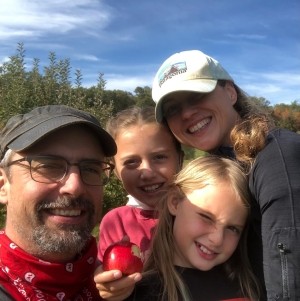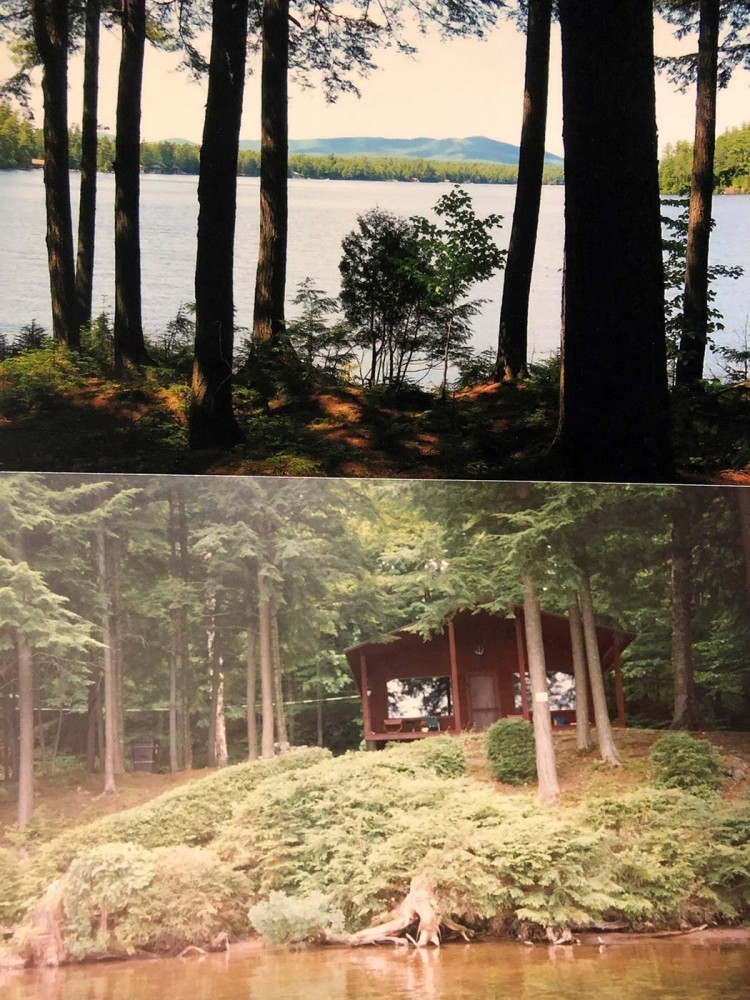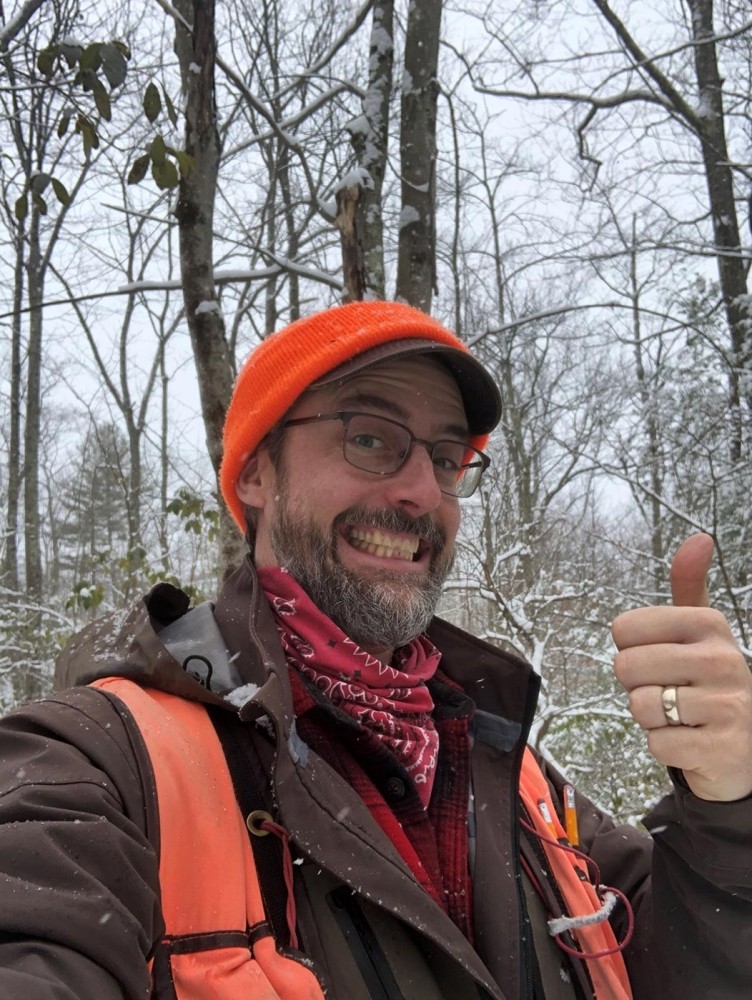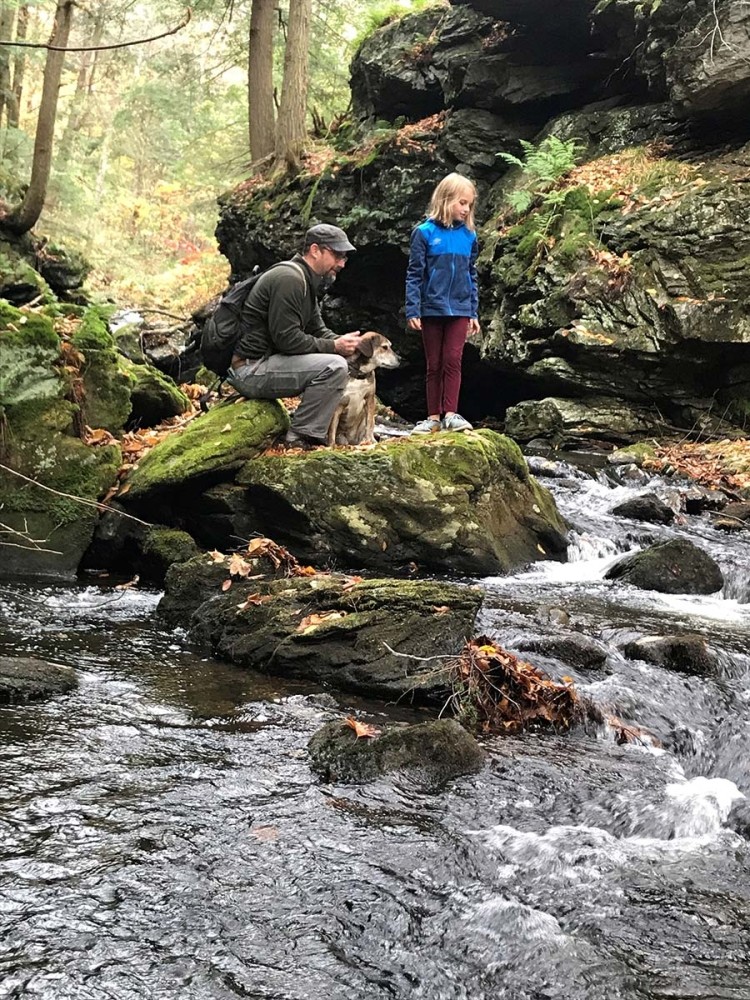
Tom Ryan has been a forester with the Massachusetts Department of Conservation and Recreation (DCR) since 2003. He recently shifted from service forestry – working with private landowners and municipalities – to management forestry, helping to manage and steward some 314,000 acres of state forest, park, and reservation lands. Tom lives with his wife, Katie, and their two daughters in Monterey, Massachusetts, where he serves on the volunteer fire departments for both Monterey and neighboring Tyringham, as well as on the board of directors for the Bidwell House Museum, where he focuses on forest stewardship. Tom is also a member of the Berkshire Woodworkers Guild.
I was born and raised in Berkshire County, and I definitely spent a lot of time outside growing up. As was fairly typical of Gen X, we’d go outside and come home when the streetlights came on. I had a brook in my backyard, and I would use that to go explore and keep me from getting too lost, because I could just follow the stream.
I also had a connection with the Adirondacks. When we were out of school in the summer, we would go to the family camp that my grandfather built with his own hands. It was as Shangri-La as you could imagine – right on Upper Saranac Lake, looking at Mount St. Regis. That very much formed me as a person. I spent a lot of time in those forests exploring with friends, going out and making forts in the woods, playing pioneer, and getting really lost and learning how to deal with that. When I was 16, they sold the family camp, which was crushing.
My science teachers growing up were amazing. My elementary school science teacher was so hugely formative in who I’ve become. At that time, a lot of the focus was on environmental sciences. There was a lot of desire to teach kids how to protect the environment. I had that strong desire to be a scientist, and when I got to UMass, I really appreciated the breadth of offerings there. I remember getting the course catalog before every semester and flipping through and reading everything and circling 50 classes that I wanted to take and narrowing it down to what they would allow me to take. I felt kind of like a kid in candy store.
I was initially on the environmental science track. I liked the tactile nature of labs. But I remember being in a lab at one point and looking around and thinking, “Is this really where I want to be – inside?” Then I took an elective Intro to Forestry course with Professor Brayton (Bill) Wilson, and suddenly everything clicked. I learned about forestry, about what it was, and started making connections with wood products and how we use them every day. I was far enough along with environmental science at that point that it didn’t make sense to abandon ship, so I earned a BS in environmental science, and I stuck around for another year and a half to earn a BS in forestry.
After I graduated, I wanted to explore our country and was drawn by the West. I moved briefly to Oregon and ended up working in construction and carpentry. Then I got a job with the U.S. Forest Service doing forest inventory and forest health monitoring in the Rocky Mountains. Our job was to go out to continuous forest inventory plots, find those plots, and collect data. A lot of times, just to get to those locations took a day of bushwhacking and backpacking. It was very inspiring to spend nine months doing that. I worked in Colorado, Utah, Arizona, New Mexico, and a little bit in Nevada.
I flew home for a friend’s wedding, and I met Katie, and I totally fell in love with Katie the second I saw her. We stayed in communication, and when that season finished up, we hatched a plan to travel and live on the road for a little while. We ended up in Prescott, Arizona. She worked in a nursery. I worked for a local landscaping company. Eventually, we were looking for something that looked and felt more like home, and we thought – why don’t we just go home? So we headed back to the Northeast. When we moved back to the area, I was working for tree companies, doing landscaping and arborist work, but I was very much interested in finding forestry work.
I started working as a BMP (best management practices) forester for DCR Service Forestry in 2003. At that time, there was an effort in the Northeast to evaluate timber harvesting BMPs. Every state kind of has their own way of evaluating that, and the effort was more or less to try to cut through the bureaucracy of it and figure out if this was working. I assessed harvesting sites across Massachusetts and did quality control in other states – Maine, Vermont, Connecticut, New York. I gained experience in seeing the different types of equipment used in a harvesting operation, different soil types, different operators. I also gained insight into the service forestry program.
In 2005, I was hired as a service forester, and I held that role until last month, when I shifted to working as a management forester with DCR. Service forestry is very much education focused. Landowners could call me, and I could go do a free site visit on their property. I was a source for people to reach out to if they had questions about managing their forest. That was the most rewarding part of service forestry – to walk people through their property. Sometimes it was just showing them their boundaries. I can’t tell you how many times I’ve been on a property, and people don’t know where their land is. One of my big roles was to help them understand what they actually owned and help them become good stewards of it. As a service forester, I was a little bit involved with basically everybody’s forestry project in my area.
Now, as a management forester, my hopes are that I have a few projects that I’m involved with extensively, very much hands on. I’m also hoping that I can use some of the skills I developed as a service forester to help communicate why we’re doing management of state forests – and to help people have a better understanding of why things are happening. I’m excited for this chance to really roll up my sleeves and get myself involved in projects from the beginning to the end – and also to narrow my focus. I can own a few projects and really take pride in those.
DCR has three land designations: Reserves, Park Lands, and Woodlands. The Park Lands are dedicated to recreational uses, and the Reserves are dedicated to natural processes. Woodlands are where I’ll be doing most of my work. I’ll be hopefully demonstrating exemplary forestry and silvicultural practices on those lands.
The biggest challenge and reward of my job – the yin and yang, if you will – has been the human interactions, and I didn’t see that coming. When I decided to be a forester, it was the concept of getting to go out and work in the woods, where no one was going to bother me. That’s kind of true when I’m doing a lot of my work, but so much more of my work, and where I feel like I continue to grow, is communications and having those hard conversations with people to explain why forestry is important work and why we do the things that we’re doing.
One of the challenges in forest management now is that we have an aging forest that is going to be subject to stressors beyond our control. Forest managers can really create a forest that will benefit the people. A lot of my focus is going to be putting out fires – for example, we have emerald ash borer moving through our area, and we have a lot of ash trees, so a lot of my work will be on dealing with dead and dying ash. The same with our plantations. We have a lot of softwood plantations that have not been tended since they were planted. We have red pine and Norway spruce plantations that are starting to fail, so I’ll be focusing some of my work there as well.
From a climate resiliency standpoint, we’re looking at the forest to see its current structure and composition and where we are vulnerable. The fact that we have very little young forest in that mix is concerning. We’re trying to create some young forests. They’re needed from a habitat standpoint, but also from a forest resiliency standpoint. We need to understand the big picture.
Another challenge is that foresters and loggers and landowners in Massachusetts are all, by and large, an aging demographic. There are going to be big changes happening. We’ve got folks who own the land who are likely to be passing it on to future generations. That can present itself as more land conversion, which is a huge problem, or even parcelization. Most of the people I work with are older than me. I’m still considered the young one, with all the gray hair that I have.
Loggers are an incredibly hardworking group of people, and I have so much respect for them. A lot of the loggers in my area are still harvesting using traditional methods – using chainsaws and cable skidders. There is an element of mechanization that’s happening, but not a lot of people are willing to jump into that because of the enormous cost. I’m hoping that there will be enough new workers coming in who will benefit from the wisdom and work ethic of these experienced loggers.
One thing I see as optimistic right now is how much support I’ve seen in my area for local agriculture. I feel like it’s not a big leap for people to make the same connections with forest products. Support the farm to table movement, but don’t forget where the table came from, literally. Our forests and our daily use and consumption of forest products – we should be sourcing that locally. I feel like that connection hasn’t been made yet, but it can be. It’s really just awareness of what forestry is, and what the condition of the forests is now.
As much as people like to think of forests as natural, they’re very much a result of our past land use. For the past 100 years, we’re more or less dealing with a very homogeneous forest, age and structure wise. It’s not in this pre-settlement state that people like to think it’s in. And you really can’t make the prediction that if you just let a forest go, it’s going to get to that state. Foresters are kind of like the original permaculturalists. We’re working with natural systems to generate forest products that we use every day.





Discussion *